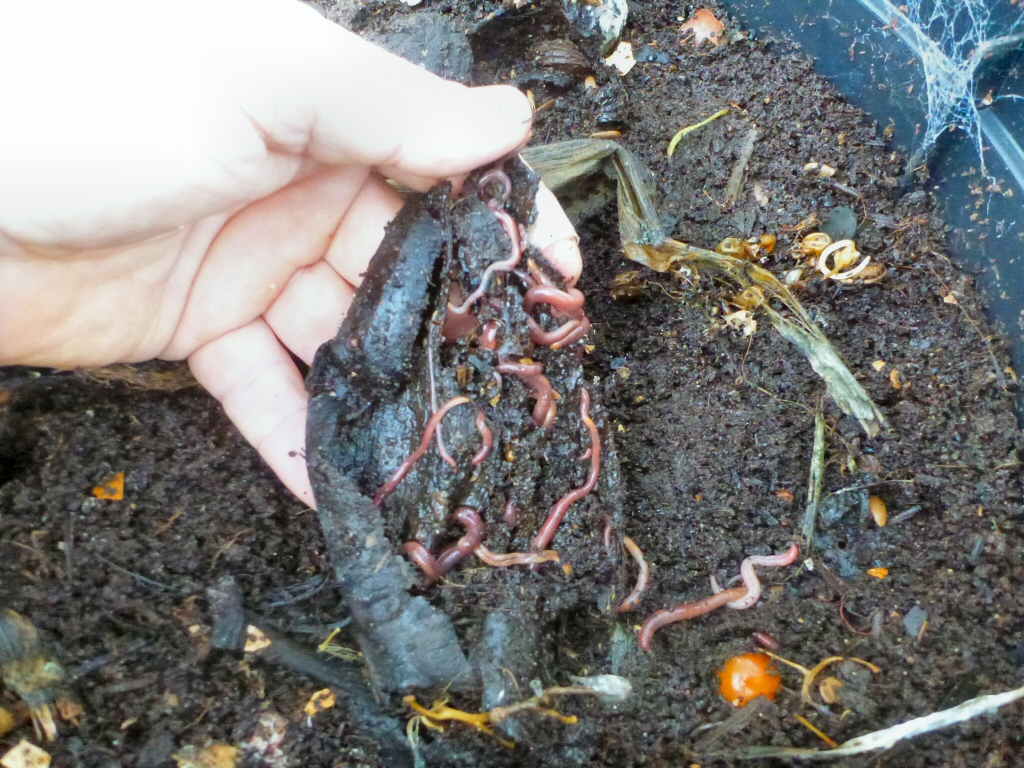Tiger and red worms – composting champions!
One of the critical parts of worm farming is to get the right species for the job. There are a couple of commonly used species, namely the tiger and red worms that are so efficient they have become known by gardeners as compost worms.
Tiger and red worms are thought to have originated in Europe and have then spread around the world with the European settlers that went to all corners of the globe. Their use in worm farms is rapidly increasing as people are seeing the benefits of vermicomposting, particularly in city environments where the worms are particularly adaptable to the concentrated organic waste streams that are generated there. It is sometimes suggested in literature on worm farming that you cannot introduce tiger or red worms into your garden soil. In my experience, if the worms are supplied with an ongoing source of food that is in contact with the soil, they can happily live there by moving constantly between the organic food source and the soil. This can be achieved by burying organic materials such as kitchen scraps or by having the base of a worm farm in direct contact with the soil. Of course it is entirely feasible to grow tiger and red worms purely on concentrated organic waste in a worm farm with no soil contact whatsoever. It should be said that other species of earthworms will generally not thrive in a worm farm as most species appear to need an environment that is not so rich in organic matter. So if you find worms as you dig through your garden, they are better left in their natural environment where they help to distibute organic matter through the soil.
Both tiger and red worms thrive in rotting vegetation unlike most other earthworms, and it is this characteristic that makes them so well suited to composting. Most species of earthworms simply tunnel through the earth and eat the soil as well as organic materials and do not adapt so well to concentrated volumes of organic waste. One of the most important things in worm farming is to have the right type of worms. It is thought by scientists that there are literally thousands of different species world-wide yet only two of these are commonly used in worm farms. The tiger worm (Eisenia fetida) and red worm (Lumbricus rubellus) are the ones most commonly used although the two can be confused as they are both predominantly red in colour. The tiger worm has distinct stripes across its body which usually allows for its easy identification and it is by far the best worm for composting because it multiplies very quickly when given lots of food.
Tiger and red worms are available from larger hardware stores and nurseries, and also online. If a bundle of worms is well packaged, they will survive a trip through the postal system easily, provided they are not left to heat up in the sun.
Get mail order worms here! >>>>>
Check out more articles and get worm farming, your plants will thank you-
How To Make an In Ground Worm Farm

